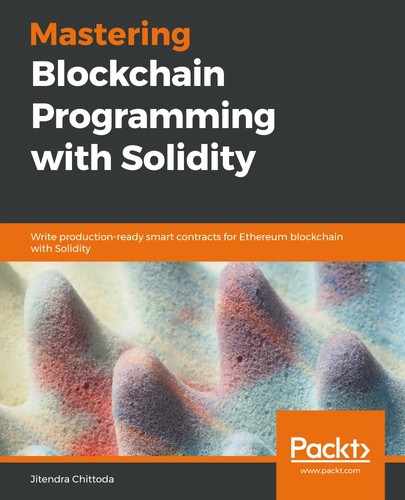The blockchain maintains a series of blocks. Each block is linked together with the last generated block. A block contains multiple transactions. At the time of writing this book, blocks are generated using a PoW consensus algorithm called Ethash in Ethereum. In future it is planned to change to PoS.
Miners share their processing power with the Ethereum blockchain network to process all pending transactions and generate a new block. Each block is generated in approximately 15 seconds. At the time of writing, a miner who generates the block is rewarded with 3 ETH in their wallet. It is proposed that, in the future, it will be reduced from 3 ETH to 2 ETH per block. It may change in future as well.
Each block has a defined gas limit: as of now, it is 8 million gas per block. This means that the total gas consumed by the transactions included in the block cannot exceed the 8 million gas limit per block.
A block contains a block header and transactions. A block can contain at least one transaction. A new block is added to the blockchain and linked to the previous block. The very first block in the blockchain is called the genesis block:

The block header contains metadata about the block and the previous block. It contains multiple fields, but it's only necessary to understand a few to have an idea of block generation:

The Parent Hash always points to the parent block of the newly generated block. This child-to-parent link goes on until the genesis block.
The Nonce is the number that is found by the miner to solve the cryptographic puzzle.
The Receipts Root is the Keccak 256-bit hash of the root node of the tree structure, which is populated with the receipts of each transaction.
The Timestamp is the time when the block is found and added to the blockchain.
The Transactions Root is the Keccak 256-bit hash of the root node of the tree structure, which is populated with each transaction.
The State Root is the Keccak 256-bit hash of the root node of the state tree, after all transactions are executed.
